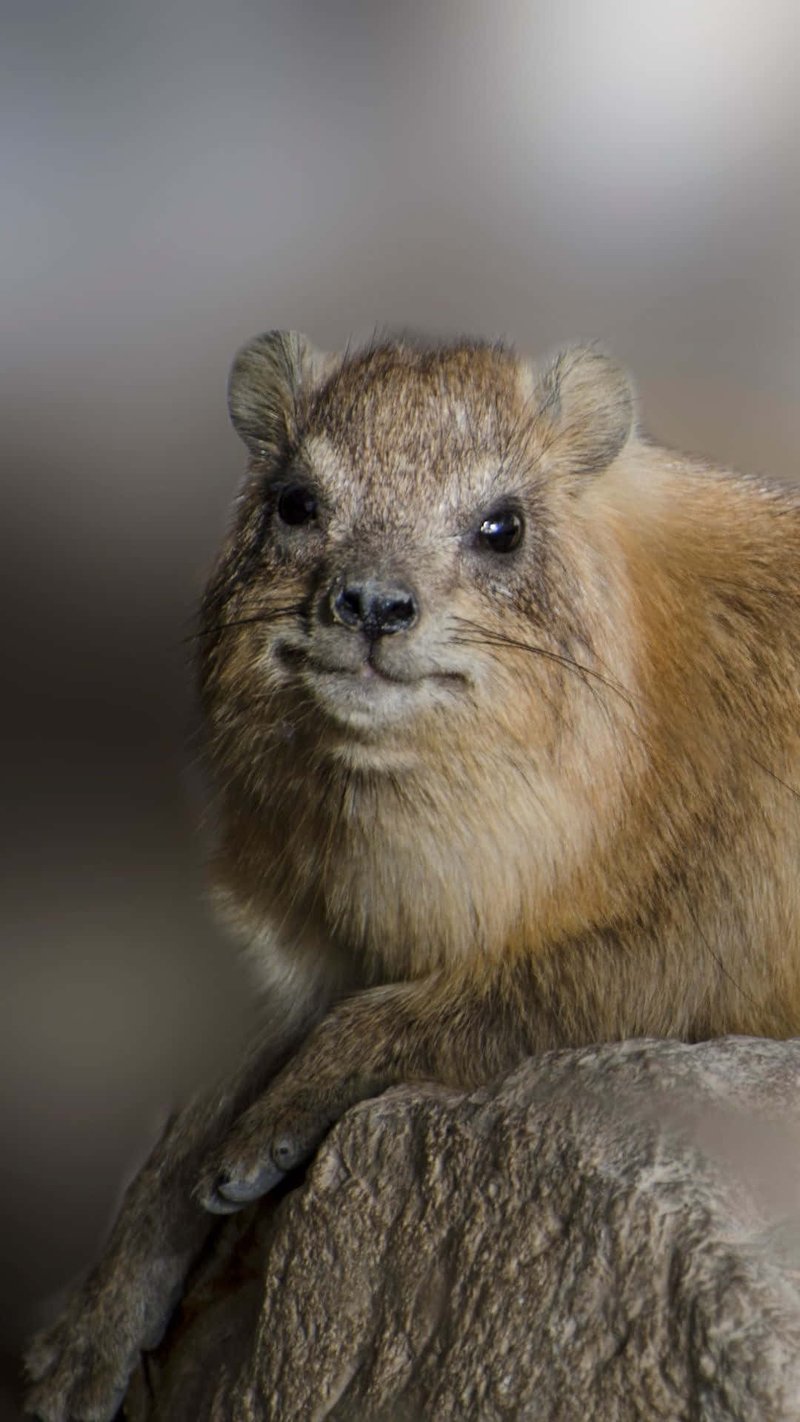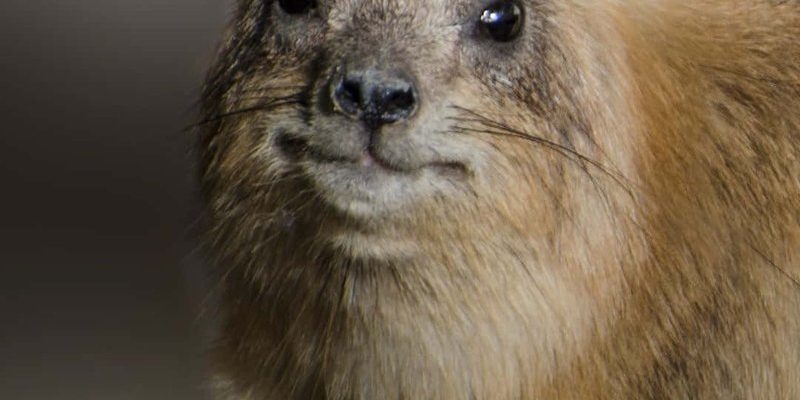
Imagine sitting in a sun-dappled rock formation, watching an adorable rock hyrax peeking out from behind a boulder. They’re social creatures and seem to engage in curious interactions with one another. But just how smart are they? Let’s explore the cognitive abilities and behaviors of the rock hyrax in a way that pulls back the curtain on these remarkable animals.
Understanding Rock Hyrax: An Overview
Rock hyraxes belong to a group called Hyracoidea, which might sound complicated, but it’s really just a fancy way to describe their family tree. These small mammals are quite unique. They have thick fur, rounded bodies, and a love for sunny spots. Growing to about the size of a house cat, their average weight ranges from 4 to 11 kg (about 9 to 24 pounds). They are herbivorous and primarily munch on grasses, leaves, and fruit.
These little creatures live in colonies, which can consist of dozens of individuals. This social structure is essential for their survival. You might notice that they often sit basking in the sun, but don’t be fooled—there’s a lot more happening in their social dynamics than meets the eye. In these colonies, they communicate using various vocalizations, ranging from chirps to barks, which help them alert each other to potential dangers.
Cognitive Abilities: Problem Solving and Learning
One of the most fascinating aspects of rock hyrax intelligence is their problem-solving skills. Just like we might use our brains to figure out a puzzle, these animals can learn to navigate obstacles in their environment. Research suggests that they are capable of spatial learning, which means they can remember locations of food sources or safe hiding spots.
For example, if a rock hyrax discovers a tasty patch of grass, it will likely return to that spot even after a long period. This ability to remember specific locations plays a crucial role in their survival. They can discern patterns in their environment and adapt their behavior accordingly, which is pretty impressive for such small creatures.
Moreover, rock hyraxes have shown flexibility in their foraging strategies. In different environments, they might adapt what they eat based on what’s available, demonstrating a level of cognitive flexibility that many animals have. They are not rigid in their behavior but instead can shift their habits based on their surroundings—kind of like how we choose different restaurants depending on what we’re in the mood for.
Social Dynamics: Communication and Hierarchies
Now let’s dive into their social lives. Rock hyraxes live in groups called colonies, and these colonies have intricate social structures. You might find them grooming one another, which helps strengthen their social bonds. Grooming isn’t just about keeping clean; it’s a way for them to communicate trust and build relationships.
In these colonies, it’s not just about who gets to eat first. There’s a hierarchy in place, often determined by age or size. The dominant individuals get preferential access to food and prime basking spots. This social structure helps maintain peace within the group. Imagine a family gathering where everyone knows who gets to sit where at the dinner table!
Hyraxes use a range of vocalizations to express their feelings and maintain group cohesion. From warning calls that alert others to danger, to softer sounds when interacting with friends, their vocal communication is complex. It’s like having your own language, tailored to the situation at hand.
Behavioral Adaptations: Survival Tactics
Every species has its tricks for surviving in the wild, and rock hyraxes are no exception. They have developed fantastic adaptations that showcase their cognitive abilities. For instance, when they sense danger, they don’t just scatter. Instead, some individuals act as sentinels, standing guard while the others feed. This cooperative behavior is a smart strategy for survival.
They’re also excellent at identifying various threats. Rock hyraxes can differentiate between predators based on visual and auditory cues. For instance, they may react differently to the sound of a hawk versus that of a snake. Understanding these distinctions enhances their chances of survival.
Let’s not forget their rocky habitats. These little guys have a knack for navigating steep terrains and crevices, which help them evade predators. You might think of it as them being tiny mountain goats, using their skills to find safe spots and food while avoiding danger.
Learning from Experience: Observational Learning
You might be surprised to learn that rock hyraxes are capable of observational learning. This means they can learn new behaviors by watching others. Say one hyrax discovers a new source of food; others might observe and imitate that behavior rather than discovering everything on their own. This social learning is crucial because it allows them to adapt to new situations more quickly.
For instance, if a younger hyrax sees an older one skillfully maneuvering through a rocky landscape, it might learn to take the same route. This ability not only improves their chances for survival but also helps them thrive in their environment. It’s akin to how we might learn to ride a bike by watching a friend do it first.
This instinct to observe and learn from one another strengthens their social bonds and enhances the intelligence of the entire group. You could say that just like a collaborative workplace, sharing knowledge can lead to greater success for everyone involved.
Conservation and Importance: Why It Matters
While rock hyraxes may not be as well-known as elephants or lions, they play an important role in their ecosystems. By munching on vegetation, they help maintain plant growth and contribute to the health of their habitat. In many ways, they act as small-scale gardeners, ensuring that plants flourish in their environments.
Unfortunately, rock hyrax populations face threats from habitat loss due to human encroachment and climate change. As their habitats shrink, so do their chances for survival. Conserving their environments is essential not just for their sake but for the overall balance of their ecosystems. Recognizing the value of rock hyraxes helps us understand the interconnectedness of all species.
Support for conservation efforts and habitat preservation can make a real difference for these intriguing creatures. Advocating for natural spaces ensures that rock hyraxes—and the unique stories they hold—remain part of our world.
Key Takeaways: The Smarts of Rock Hyraxes
So, how smart is a rock hyrax? Honestly, they show remarkable cognitive abilities that speak volumes about their adaptation and survival instincts. From problem-solving skills to intricate social behaviors, these small mammals are more than just cute faces peeking out from behind rocks.
Their intelligence is evident in how they learn from one another, navigate their environments, and communicate within their colonies. It’s clear that there’s much more to the rock hyrax than meets the eye.
As we continue to explore the animal kingdom, it’s crucial to appreciate not only the well-known species but also those that may fly under the radar, like the rock hyrax. By doing so, we enrich our understanding of nature and the fascinating, intelligent behaviors that exist all around us.

